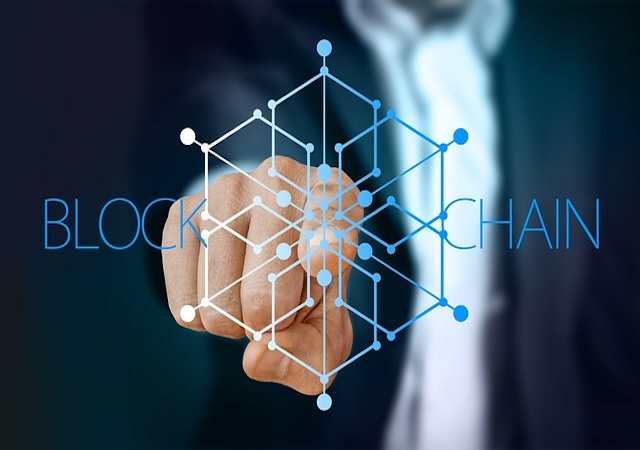October 31st, 2024
AI
The convergence of Artificial Intelligence (AI) and blockchain technology is reshaping the digital landscape, offering transformative opportunities across industries. By integrating AI with blockchain and decentralized data systems, we are witnessing a shift towards systems that are more secure, transparent, and resilient. This fusion leverages the strengths of both AI and blockchain, creating a robust ecosystem for handling, analyzing, and securing data at scale. Here’s a closer look at how these technologies intersect and the promising innovations they bring to the table.
1. Understanding Blockchain and Decentralized Data
Blockchain is a distributed ledger technology that enables secure, transparent, and tamper-proof recording of transactions across a decentralized network. It operates without a central authority, ensuring that no single entity has complete control, which reduces risks associated with data breaches and manipulation. With each transaction cryptographically linked to the previous one, blockchain has found applications far beyond finance, from healthcare to supply chain management.
Decentralized data storage, on the other hand, moves data away from centralized servers and distributes it across a network of nodes. This approach aligns with blockchain’s decentralization principles, providing enhanced security, better accessibility, and resistance to data loss or tampering. Projects like IPFS (InterPlanetary File System) and Storj exemplify decentralized data storage by offering systems that reduce reliance on centralized cloud storage providers.
2. AI and Blockchain: A Perfect Match
Artificial Intelligence thrives on data. The more data AI algorithms can access, the more accurate and powerful they become. However, traditional data storage and processing methods often create data silos, limiting the effectiveness and reach of AI applications. By integrating AI with decentralized blockchain networks, data accessibility is enhanced, enabling AI to draw from larger, more diverse datasets.
• Transparency and Traceability: Blockchain’s immutable ledger allows AI models to explain their decisions in a clear and transparent manner. With each step recorded on a distributed ledger, stakeholders can trace the data journey, ensuring compliance with regulatory standards and ethical AI practices.
• Enhanced Security: Blockchain’s cryptographic nature ensures that data used by AI algorithms is secure and tamper-proof. This security is especially crucial in fields like healthcare and finance, where data integrity is paramount.
• Decentralized and Collaborative AI Models: Blockchain enables decentralized AI, where models are trained and improved collaboratively without relying on a central authority. For example, companies can pool their data on a blockchain network, training more effective AI models while preserving individual data privacy.
3. Key Applications of AI and Blockchain Synergy
Combining AI with blockchain technology has opened the door to numerous innovative applications across industries:
• Supply Chain Optimization: Blockchain provides an immutable record of supply chain transactions, which AI algorithms can analyze to optimize routes, detect inefficiencies, and prevent fraud. This convergence is particularly beneficial in sectors like pharmaceuticals and food safety, where tracking and transparency are vital.
• Decentralized Autonomous Organizations (DAOs): DAOs are blockchain-based organizations that operate through smart contracts without centralized leadership. When AI algorithms govern DAOs, they can dynamically adjust governance policies based on data, creating highly adaptive, data-driven organizations.
• Fraud Detection and Prevention: Blockchain’s transparent nature allows AI systems to detect fraudulent activities more accurately by analyzing historical transaction data. In finance, for example, AI can analyze blockchain data to flag suspicious transactions while the decentralized nature ensures the data remains secure.
• Personalized Finance and DeFi (Decentralized Finance): AI-driven DeFi platforms can tailor financial services to users’ unique needs by analyzing historical and transactional data stored on blockchains. This can result in personalized investment opportunities, lending options, and portfolio management tools.
4. Overcoming Challenges
While the fusion of AI and blockchain holds tremendous promise, it is not without its challenges:
• Data Privacy and Governance: Balancing data accessibility for AI with privacy concerns remains a challenge. Decentralized data systems require robust governance frameworks to protect user privacy and prevent data misuse.
• Scalability Issues: Blockchain networks, especially public ones like Ethereum, face scalability challenges. High computational demands and energy consumption can limit the efficiency of AI processes running on these networks.
• Data Quality and Interoperability: AI models are only as good as the data they train on. Integrating high-quality data across decentralized networks is a significant hurdle, as is ensuring that different blockchain networks can interoperate.
5. The Future of AI and Blockchain: Towards Decentralized Intelligence
The convergence of AI, blockchain, and decentralized data represents a leap towards more autonomous, secure, and intelligent systems. Innovations such as Federated Learning on decentralized networks allow for training AI models directly on users’ devices, with results shared via blockchain rather than raw data. This method preserves privacy while enabling collaborative AI development. Projects like SingularityNET and Fetch.ai are already pioneering decentralized AI marketplaces, allowing AI solutions to scale across decentralized ecosystems.
Moreover, as the demand for secure data sharing and compliance with privacy regulations like GDPR grows, AI and blockchain will play pivotal roles in balancing innovation with ethical considerations. Blockchain’s transparency and traceability, combined with AI’s analytical power, create a compelling case for the development of ethical and responsible digital ecosystems.
Conclusion
The synergy between AI, blockchain, and decentralized data is driving a new paradigm of secure, transparent, and efficient digital solutions. As these technologies continue to mature, we can expect a wide array of applications that redefine data ownership, security, and intelligent automation. By navigating the challenges and harnessing the power of decentralized intelligence, businesses and individuals alike can look forward to a future where technology aligns with transparency, accountability, and collective benefit.
In this brave new world of decentralized intelligence, the possibilities are as exciting as they are transformative.